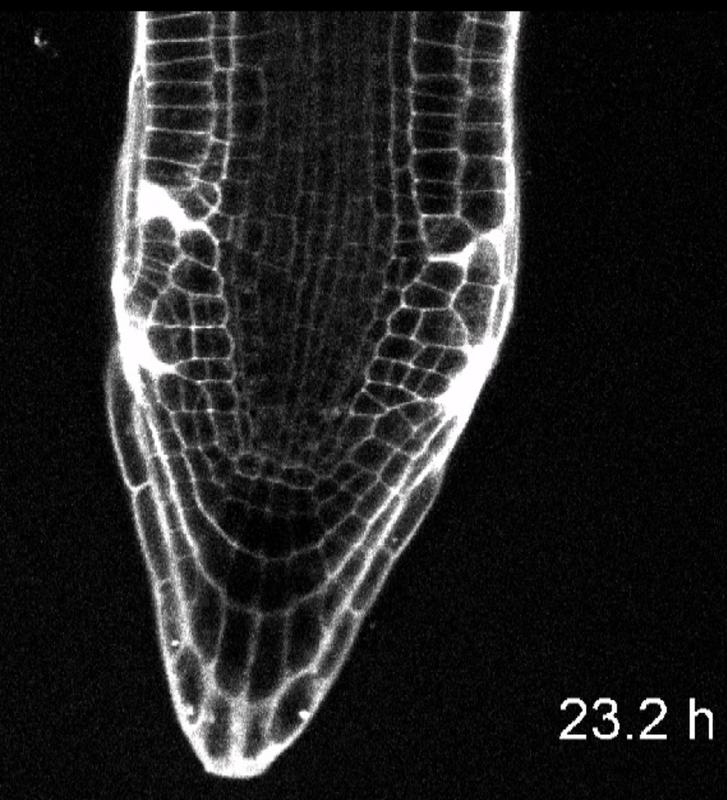Wounded plants: how they coordinate their healing

Too much Auxin may cause tumorous behavior Lukas Hoermayer / IST Austria
All living organisms suffer injuries. Animals and humans have movable cells, specialized in finding, approaching, and healing wounds. Plant cells, however, are immobile and can't encapsulate the damage.
Instead, adjacent cells multiply or grow to fill the injury. In this precision process, each unique cell decides whether it will stretch or divide to fill the wound. Even though scientists study regeneration in plants since the mid-19th century, the cell's 'reasons' for either choice remained unclear.
Now, scientists in the group of Professor Jiří Friml from the Institute of Science and Technology Austria (IST Austria) discovered that the hormone Auxin and pressure guide the plant's way of regenerating.
“It is incredibly fascinating how robust and flexible plant regeneration is, considering how static those organisms are,” says Lukas Hoermayer, a leading scientist in this study.
To investigate wound healing, the scientists injured a thale cress root with a laser. They then tracked cells during regeneration with a microscope.
The scientists found that the hormone Auxin, which is essential in plant growth and development, also plays a vital role in wound healing. It builds up in those cells directly touching the wound and facilitates the plant's response to injury.
When the scientists artificially changed the Auxin amounts, either no cells or too many cells responded to the wound. This uncoordinated process, sometimes even led to tumorous swelling of the root.
“Only the precise coordination of many cells throughout the whole tissue yields a defined and localized wound response,” explains Lukas Hoermayer.
Furthermore, the team recorded a pressure change within the plant, caused by the collapsing cells of the wound. When the scientists reduced the cellular pressure before cutting the plant, the pressure difference vanished, and the regeneration was weakened.
By observing plant regeneration and modifying it with chemical treatments, the scientists identified Auxin concentration and pressure changes as governing processes.
Their results advance the understanding of how roots manage to heal wounds and hence survive in sandy soil or the presence of root-attacking herbivores.
Lukas Hoermayer, Juan Carlos Montesinos, Petra Marhava, Eva Benková, Saiko Yoshida, Jiří Friml. Wounding induced changes in cellular pressure and localized Auxin signaling spatially coordinate restorative divisions in roots. PNAS. DOI: 10.1073/pnas.2003346117
Media Contact
More Information:
https://ist.ac.at/de/All latest news from the category: Life Sciences and Chemistry
Articles and reports from the Life Sciences and chemistry area deal with applied and basic research into modern biology, chemistry and human medicine.
Valuable information can be found on a range of life sciences fields including bacteriology, biochemistry, bionics, bioinformatics, biophysics, biotechnology, genetics, geobotany, human biology, marine biology, microbiology, molecular biology, cellular biology, zoology, bioinorganic chemistry, microchemistry and environmental chemistry.
Newest articles

Combatting disruptive ‘noise’ in quantum communication
In a significant milestone for quantum communication technology, an experiment has demonstrated how networks can be leveraged to combat disruptive ‘noise’ in quantum communications. The international effort led by researchers…

Stretchable quantum dot display
Intrinsically stretchable quantum dot-based light-emitting diodes achieved record-breaking performance. A team of South Korean scientists led by Professor KIM Dae-Hyeong of the Center for Nanoparticle Research within the Institute for…

Internet can achieve quantum speed with light saved as sound
Researchers at the University of Copenhagen’s Niels Bohr Institute have developed a new way to create quantum memory: A small drum can store data sent with light in its sonic…





















